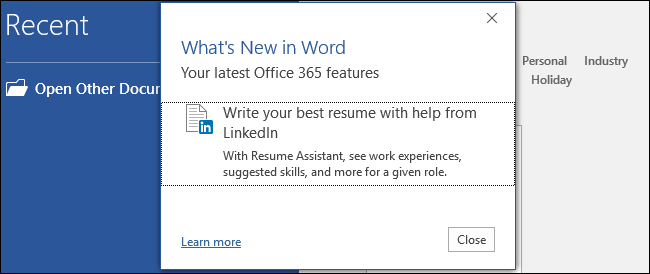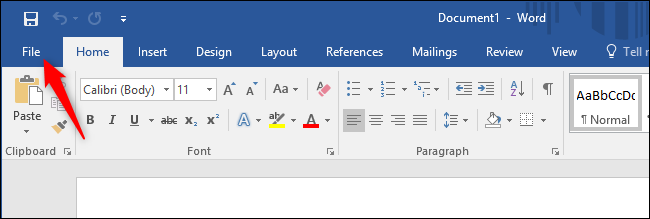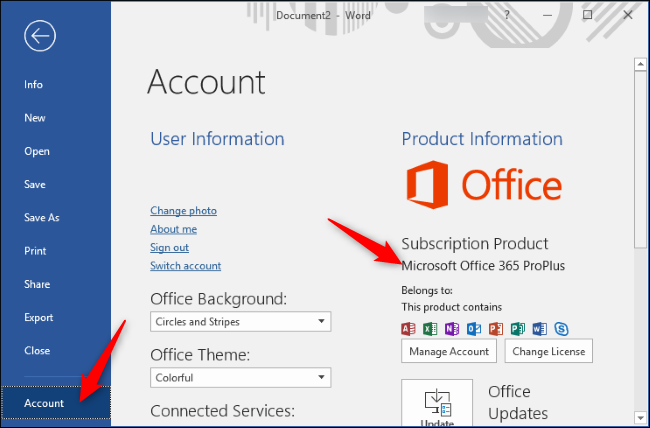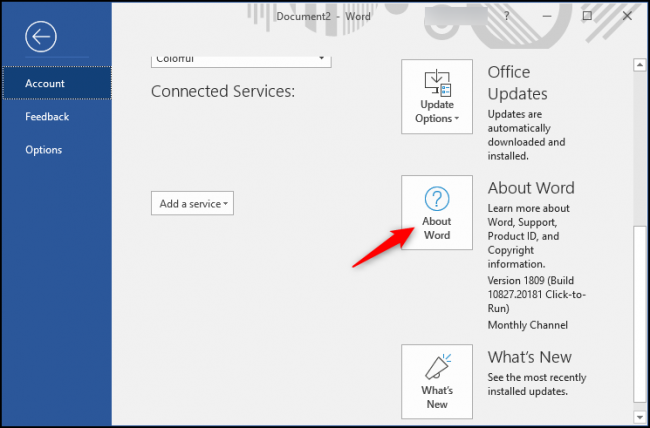
Check Out the Most Recent Updates to Microsoft Office Suite: What's New?

Check Out the Most Recent Updates to Microsoft Office Suite: What’s New?
Quick Links
- The Latest Version is Office 2019
- How to Check if You Have the Latest Version
- How to Update to the Latest Version
Office 2019 is the latest version of Microsoft Office for both Windows PCs and Macs. If you subscribe to Office 365, you’ll always receive updates to the latest version of Office. If you buy a traditional single system license, you have to purchase each new version to receive it.
The Latest Version is Office 2019
The latest version of Microsoft Office is Office 2019, which is available for both Windows PCs and Macs. Microsoft released the Office 2019 for Windows and Mac on September 24, 2018.
The Windows version runs only on Windows 10. If you’re still using Windows 7, Office 2016 is the latest version you can use. The Mac version supports macOS 10.12 Sierra, macOS 10.13 High Sierra, and macOS 10.14 Mojave.
There are also Office applications for iPhone, iPad, Android, and the web. These are always up-to-date with the latest software.
The versions of Office 2019 provided with Microsoft’s Office 365 subscription service are a bit different than the traditional versions of Office 2019, despite the name. The Office applications available through the Office 365 subscription service receive new features before the standard standalone copies of Office 2019 do. So, if you have Office 365, Office 2019 isn’t a big deal .
If you don’t use Office 365, going from Office 2016 to Office 2019 isn’t a significant upgrade. Office 2019 includes new features like improved inking in all apps (with a pen, finger, or mouse), a PowerPoint Morph transition effect you can use between slides, a “Focused Inbox” for Outlook that separates your most important emails from less important ones, and a few more features.

How to Check if You Have the Latest Version
To check which version of Microsoft Office you’re using on Windows, open an Office application like Word or Excel, and then click the “File” menu at the top left corner of the window.

Click the “Account” option in the sidebar menu. Look under “Product Information” at the right side of your screen, and you’ll see which version of Office you’re using.
If you don’t see an “Account” option, click “Help” instead.
In the screenshot below, we’re using Microsoft Office 365 ProPlus. This is a version of Office 365.

You can also scroll down and look click the “About” button on the Account page—for example, “About Word” in Microsoft Word—to find more information.
Next to the “About” button, you’ll also see the version and release channel of your Office apps. In the screenshot below, we’re using version 1809, which was released in September 2018, and we’re on the monthly update channel. The semi-annual channel is slower and useful for organizations that want less frequent updates.

For example, this window clarifies that we’re using the 32-bit version of Microsoft Word for Office 365.

On a Mac, click the “About” option in an application’s menu to find this information.
For example, in Microsoft Word, click Word > About Word. In Microsoft Excel, click Excel > About Excel.
Related: How to Find Out Which Version of Microsoft Office You’re Using (and Whether it’s 32-bit or 64-bit)

How to Update to the Latest Version
How you update depends on how you purchased Microsoft Office. If you subscribe to the Office 365 subscription service , you will always have the latest version of Microsoft Office.
You can check for updates by clicking File > Account > Update Options > Update Now in an Office application. However, unless you’ve disabled updates, which isn’t recommended, Office will always update itself in the background.

Office 365 has different update channels. Standard consumer versions of Office 365 are on the “Monthly” update channel that receives new features and other updates each month. However, if you installed a version of Office through your organization’s Office 365 ProPlus subscription, you may be on the “Semi-annual” channel instead. This channel only gets updates with new features once every six months. You’ll still receive security updates immediately—only new Microsoft Office features are postponed.
You can switch to the monthly channel if you’re on the semi-annual channel and want to receive more frequent feature updates. To do so, download and run Microsoft’s Office channel switcher fix . It will change your Office product’s update channel and automatically begin downloading the new version.

If you don’t have Office 2019, you can get it by either subscribing to Microsoft’s Office 365 subscription service or by purchasing a single PC or Mac license of Office 2019 and installing it on your system.
If you opt to purchase Office 2019 instead of subscribing to Office 365, you won’t be automatically updated to the next major release of Office. However, if you subscribe to Office 365, you’ll automatically be kept up-to-date with the latest Office software.
Office 365 is a particularly good deal if you want to install Office on more than one PC. Office 365 Personal costs $70 per year and lets you install Office on one PC or Mac. However, Office 365 Home costs $100 per year and lets you install Office on up to five PCs or Macs—or any combination of the two. A single standalone copy of Office 2019 for Windows or Mac costs $150, and that’s just for one device.

If you paid for Office 2016 instead of subscribing to Office 365, we recommend you stick with it and don’t bother paying for Office 2019.
Also read:
- [New] Breaking the Internet Hashtag Wisdom for Short Films
- [Updated] The Complete Checklist for Remotely Podcaster's Delight for 2024
- 2024 Approved Full-Featured iCloud Drive in Sierra – Comprehensive Exploration
- In 2024, The Best Android Unlock Software For Honor Magic V2 Device Top 5 Picks to Remove Android Locks
- Insta Wonders Top 9 Habits of Influencers and Stars for 2024
- Intel Wi-Fi 6E (AC 9560) Driver Software Download & Upgrade Guide
- Leading Platforms Mimicking Twitter's Network for 2024
- Maximizing PIN Security: Windows 10 & 11 Expansion Guide
- Peering Inside Windows 11: Understanding Its Registry Essence
- Personalizing the Windows 11 Task Manager Homepage
- Seamless Methods for No-Cost C-Span Video Downloads
- Simplifying Heic Files Into Desired JPEGs on PC
- Smooth Save Experience: Top 6 Strategies to Tackle PPT Errors
- Solutions to Correcting WinRAR's Incorrect File Hashes
- Troubleshooting Misrepresented CPU Metrics in System Monitoring
- Title: Check Out the Most Recent Updates to Microsoft Office Suite: What's New?
- Author: Joseph
- Created at : 2024-10-28 16:24:43
- Updated at : 2024-10-30 16:51:08
- Link: https://windows11.techidaily.com/check-out-the-most-recent-updates-to-microsoft-office-suite-whats-new/
- License: This work is licensed under CC BY-NC-SA 4.0.